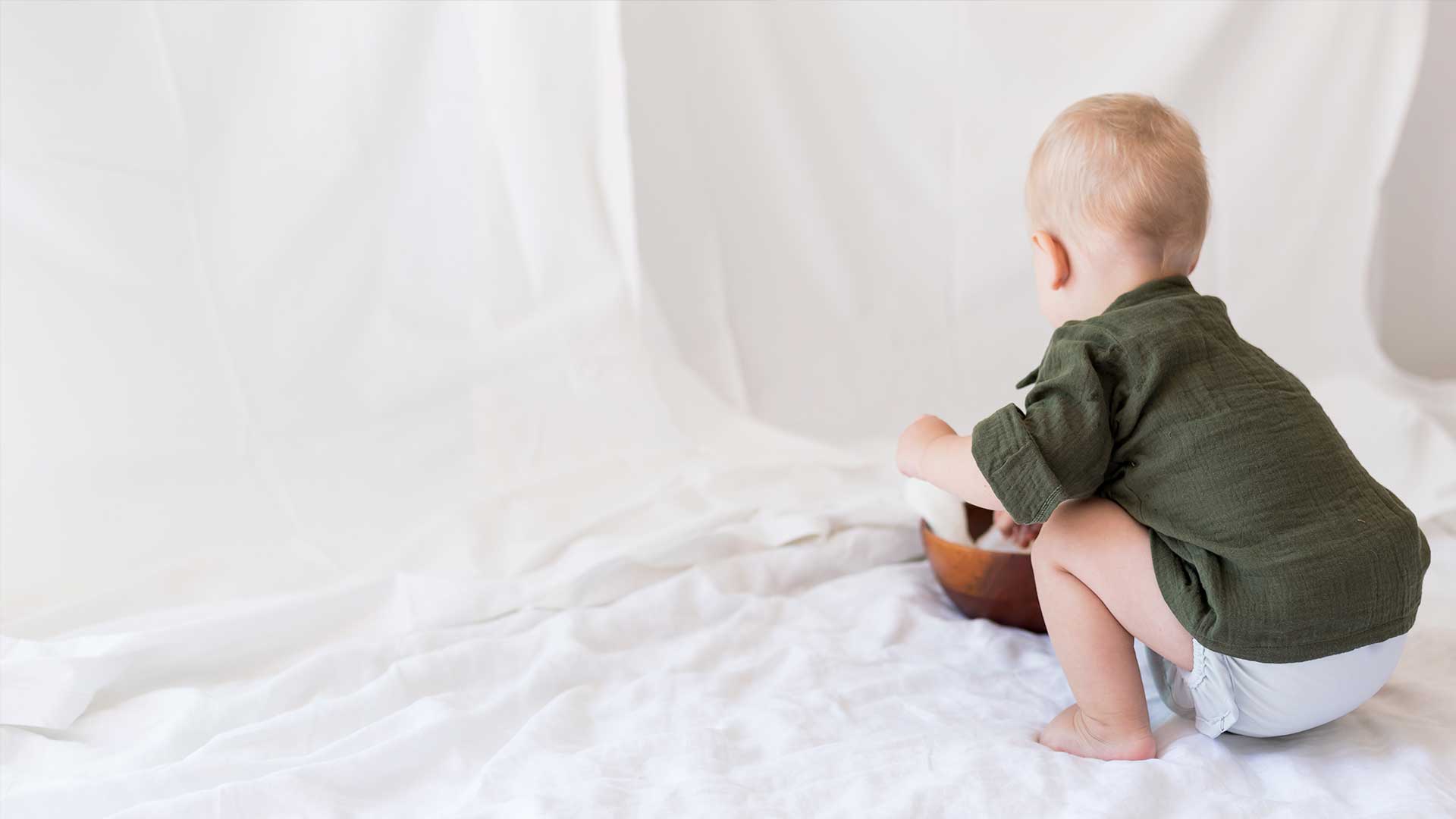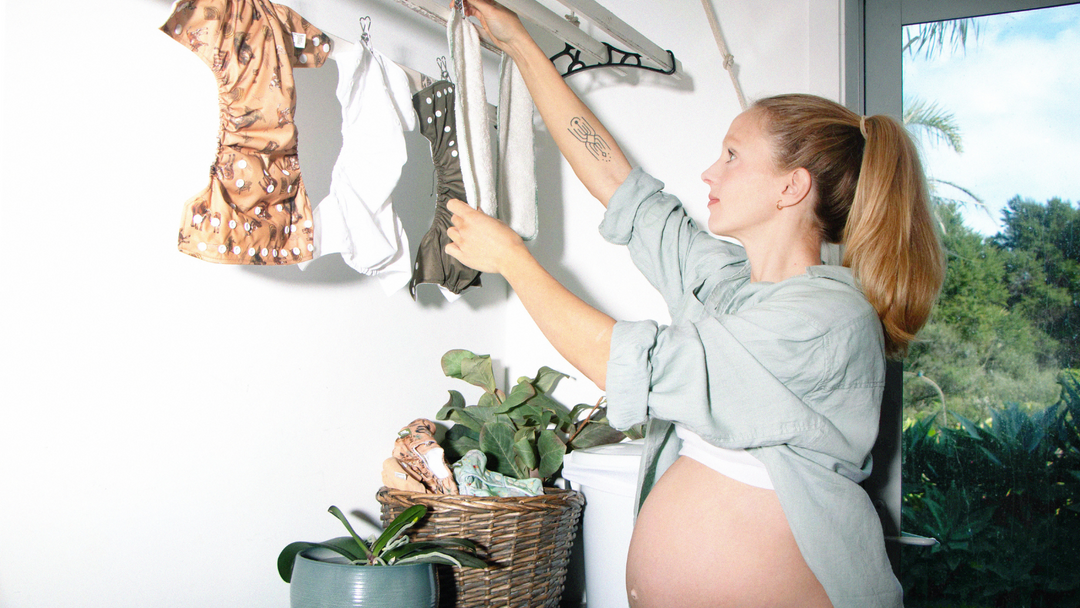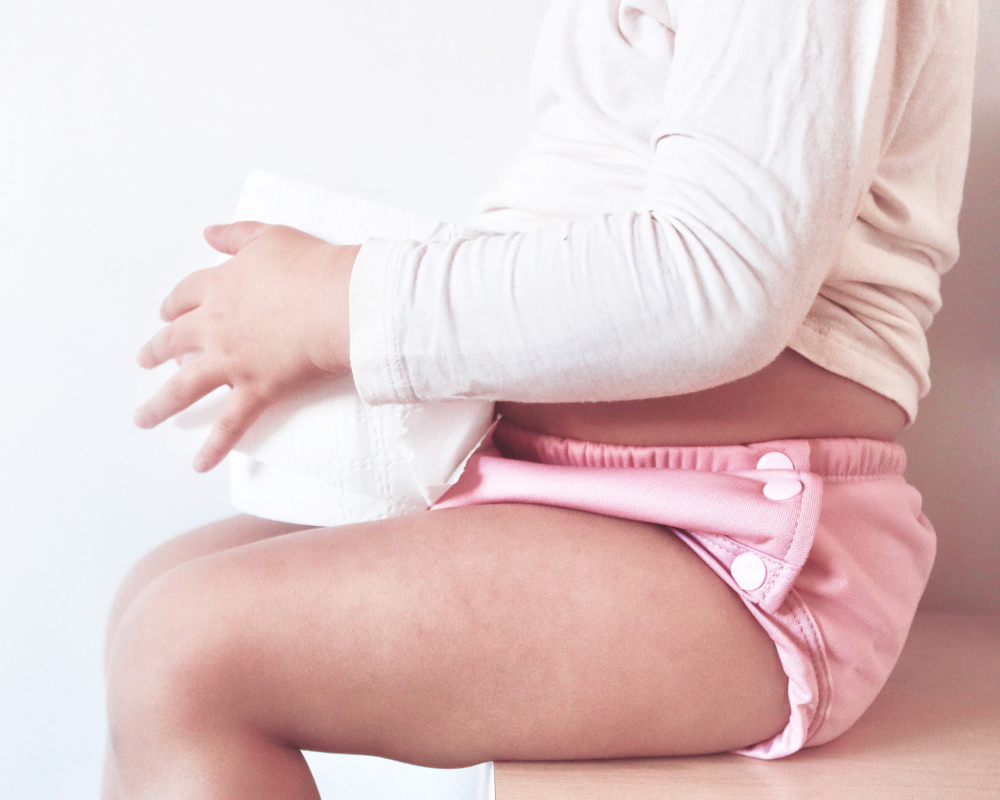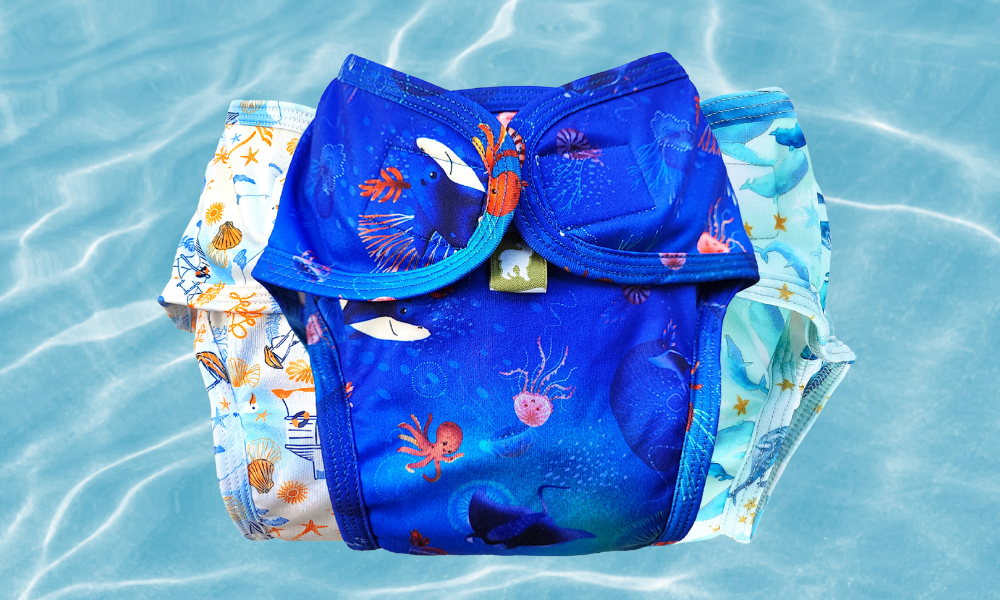Pre Wash for New Nappies
All reusable items we sell must be washed before use or they will not absorb anything. All yarn has a starch-based ‘size’ sprayed on it to facilitate snag-free smooth running through the knitting machines, which operate at high speed.
We recommend washing the new nappies through a 30˚c wash three times, without detergent. This wash will remove the water-soluble starch and activate the absorption of the fabric. There’s no need to dry between washes; leave them in and start the cycle again.
Our bamboo and cotton nappies, and all our boosters/inserts, will not achieve total absorption until after the first six washes. A six times washed nappy will hold 12% more fluid than a twice washed nappy, which itself holds twice as much as an unwashed nappy straight from the factory.
Dirty Nappy Storage
We advise to 'dry pail' soiled nappies in a lidded nappy bucket or hanging nappy pail. There is no need to soak soiled nappies.
Do not leave soiled nappies unwashed for more than three days.
If you have forgotten a batch of nappies for longer than three days, you will need to do a double wash at 60 degrees to sanitise.
Washing
Wash pooey nappies separately from your household laundry, especially tea towels and baby clothing. If the nappies are just wet from urine, they are fine to wash with other laundry; a towel wash is ideal to pop a few nappies in with.
Pre-wash checks
If the nappies are heavily soiled (lots of poo), we recommend popping the nappies through a rinse setting before the main wash; this will remove the worst of the soiling, making the main wash more effective. We recommend a rinse rather than pre-wash, as some machines reuse the pre-wash water for the main wash.
Check the Velcro laundry tabs are closed tightly on the fabric nappies, turn wraps inside out and seal the Velcro; this will prevent fluff from building up and making the Velcro less effective.
Remove boosters and inserts from pocket nappies before laundering.
If using the mesh laundry bag, do not fasten for washing your nappies if full; nappies need a good amount of agitation to be laundered thoroughly so you want them to escape from the bag.
Wash cycle
The most important thing for washing nappies is using a long, complete wash cycle, a nappy wash length should be 2 hours minimum. Short or eco washes are not suitable.
LittleLamb products can be washed in 40 or 60-degree wash cycles depending on your preference. If the child has thrush, live vaccinations, tummy upset or the like, you must use 60 to sanitise the nappy.
If you have soft water an extra rinse may be beneficial; an extra rinse is not needed for hard water, as it can deposit the minerals in hard water into the fabric.
Spin speed; the faster the spin, the more liquid is drawn out so the faster the drying time.
Detergent
Use the correct dose of detergent for conditions, load size, water hardness, soiling etc. We recommend a powder detergent, it tends to dissolve and rinse better. Start by using a full dose as advised on the detergent packaging, then reducing if needed - if your rinse cycle has foam, you will need to reduce the amount of detergent as the wash has not removed all the detergent from the items. Soft water may need up to half the recommended dose, and hard water will more than likely need the full dose. Bio or non-bio, whichever you prefer to use, is fine.
Do not use soap nuts, eco eggs/balls or the like; we feel they are not effective enough for laundering nappies.
No fabric softener should be used, it coats the fibres and reduces absorbency.
Do not use bleach or stain removers. We do not advise the use of sanitisers, they will affect the elasticity in your nappies and shorten the lifespan, besides they are often not necessary.
Most detergents will have levels of 5-15% of sodium per-carbonate (the active ingredient in sanitisers) so additional sanitiser is not necessary, adding sanitiser does not add any benefit if your detergent already has the active ingredient, just extra expense for you.
Drying
Air drying is best for the environment, your pocket (it's free) and for the lifetime of the fabrics. To air-dry, hang on a clothesline outside, or inside near to but not touching a heat source.
Do not place the nappies or wraps directly on a radiator, this contact will break them.
Tumble drying on a low heat setting is ok for LittleLamb products without PUL. PUL products (pocket nappy shells, wraps and wet bags) will be damaged by tumble drying, and as they dry so quickly it is not necessary.
If fitted nappies are feeling hard, finish them in the tumble drier on a low heat setting for 15 minutes - this will make them fluffy again. Do not stretch the elastic when still warm from drying, as this can lead to elastic failure.
Bullet pointed (if the above was too much to read 😅)
* New nappies, wash nappies, boosters, breast pads, sanitary pads, 3 times before use. Other products can be pre-washed once to ensure they are fresh.
* Store soiled nappies in a nappy pail or bag, no soaking is needed.
* Wash regularly, do not store soiled nappies for more than 3 days.
* Use a full long wash cycle, at 40 or 60 degrees temperate. Do not use short or eco washes.
* Use a full dose of detergent, follow pack guidelines for dosage according to conditions, you may need to reduce the dose slightly if you have soft water.
* Powder detergent is better in our opinion, it can be bio or non bio, whichever you prefer.
* Full speed spin for faster drying.
* Extra rinse for soft water, no extra rinse for hard water.
* Air drying is best, you can tumble dry on a low heat setting only, do not tumble dry wraps or pocket nappy shells.
* No bleach, sanitisers or stain removers.
* No fabric softener.
* Air dry is best. If tumble drying use a cool setting only and not tumble dry wraps, pocket nappy shells or wet bags.
Choosing the Best Laundry Detergent for Cloth Nappies.
When choosing a laundry detergent for cloth nappies, look for high cleaning power while avoiding fragrances and perfumes, dyes, optical brighteners and bleach. Avoid harsh enzymes if your baby has sensitive skin. Ensure your cloth nappy detergent does not contain fabric softeners as this can cause residue build-up over time.
Ultimately, the perfect cloth nappy detergent will:
- Provide a thorough cleaning, leaving your nappies odourless after washing
- Increase the absorbency of your nappies and deter leaking
- Keep baby’s bum rash-free
- Be easily accessible and affordable for your family
- Work safely and efficiently in your washing machine
Removing Stains
Staining on cloth nappies is normal and does not affect absorbency so long as your nappies are regularly and thoroughly cleaned. When fighting stains, avoid bleach and boiling water as they can cause damage and reduce the overall lifespan of your nappies.
In our opinion, the best stain removal tip is to dry your nappies in the sun. Lay your nappies on a flat surface or hang them on a drying rack or clothesline – stains nearly always come out after a few hours in the sun. Using disposable liners can also minimise staining as the solids have less contact with the nappy.
Dealing with Residue Build-Up and Repelling
Feel like your nappies are not absorbing? Think you have residue build-up? If you find that your cloth nappies are no longer absorbing properly, you are having trouble getting rid of smells, or your baby is getting a rash, you likely have residue build-up.
Residue build-up is usually the result of detergents or urine that isn’t fully washed away. Washing cloth nappies with too much or too little laundry detergent, or using fabric softeners, can create residue build-up. Even using a nappy cream that is not cloth nappy friendly can result in a build-up.
You can test if you are having an absorbency issue by laying your clean nappies flat and pouring a small amount of water on them. Apply a bit of pressure. The inserts should absorb the water. If the water ‘wicks’ away and does not absorb into the insert, you likely have a residue problem.
Resolving Residue Build-Up & Stripping Cloth Nappies
For a quick fix to residue build-up, start by washing your cloth nappies in a regular wash. Make sure to use the right amount of detergent as per the manufacturer instructions. Follow with two or more hot water cycles without detergent. Dry normally.
If the problem persists, review the amount of detergent you are using, taking into consideration whether or not you have hard or soft water.
If you need further assistance, please get in touch at care@littlelamb.com



